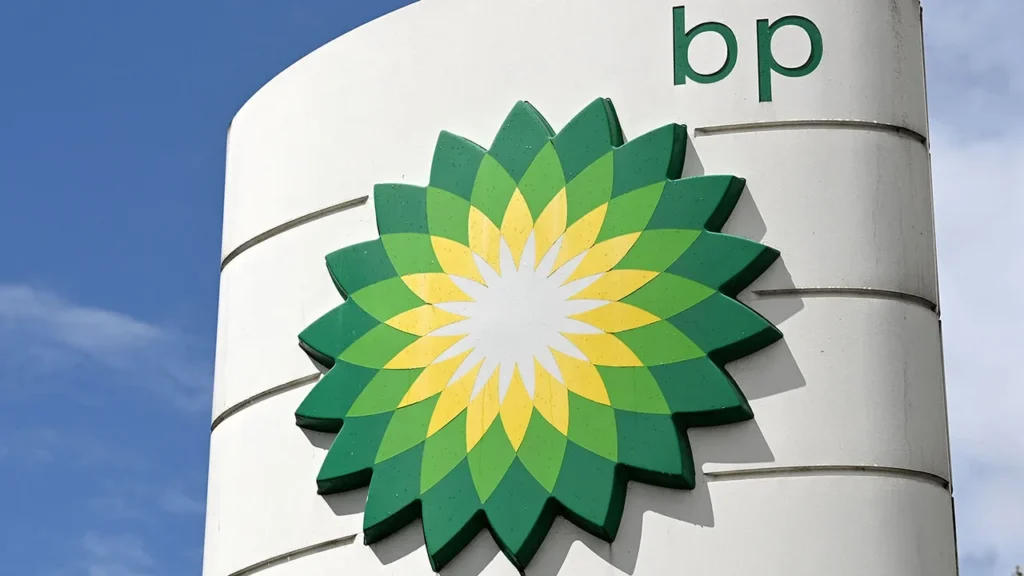Energy giant BP has reported stronger-than-expected third-quarter results for 2025, supported by a powerful rebound in its refining and gas operations. Despite a dip in global oil prices and weaker trading conditions, the company maintained steady profitability and reaffirmed its commitment to shareholder returns and balance sheet discipline.
Financial Overview
British Petroleum posted an adjusted net profit of approximately $2.21 billion for the third quarter, surpassing market forecasts of about $2 billion. While this represented a slight decline from the same period in 2024, the result demonstrated BP’s ability to stay resilient in a more volatile commodity environment.
Operating cash flow reached $7.8 billion, an increase from $6.8 billion last year. The improvement was driven by higher downstream margins and greater refining efficiency, alongside stable oil and gas production volumes. The company’s net debt held around $26 billion — well within its targeted range — reflecting prudent financial management as BP works toward reducing leverage over the next two years.
Refining Segment Delivers Exceptional Results
The standout performer in BP’s portfolio this quarter was the Customers & Products segment, which houses its refining and marketing operations. The division delivered a profit of roughly $1.7 billion, compared with just $381 million a year earlier. This marks one of BP’s strongest downstream showings in decades, powered by refining availability near 97 percent — a level the company has not seen in roughly 20 years.
Strong refining margins and reliable operational performance allowed BP to capture significant value from its global network of refineries. Although fuel trading results were weaker, they were more than offset by robust product demand and improved cost efficiency. The company also benefited from continued optimization of its supply chain and sustained jet fuel recovery as global travel demand remained steady.
Upstream Operations Stay Solid
In the upstream oil and gas division, production remained consistent even as oil prices fell roughly 13 percent year over year. British Petroleum’s diversified portfolio — spanning oil fields, gas assets, and integrated LNG operations — helped cushion the impact of price volatility. Stronger natural gas production, in particular, provided a welcome offset to weaker crude pricing.
BP’s gas business was one of the main contributors to its quarterly performance. Stable demand across Europe and Asia supported healthy margins, and the company’s long-term LNG contracts helped sustain steady cash flow. This performance underscores BP’s evolving role as both an oil producer and a major player in global gas supply, which the company views as a transitional fuel within its long-term energy strategy.
Capital Strategy and Shareholder Returns
British Petroleum reaffirmed its plan to conduct $750 million in share buybacks during the fourth quarter. The company emphasized that share repurchases remain a key tool in its capital-allocation framework, supported by strong cash generation and disciplined spending.
In addition, BP reiterated its plan to complete or announce around $5 billion in asset disposals this year, advancing toward its multi-year target of $20 billion in divestments by 2027. These sales will help streamline operations, reduce debt, and recycle capital into high-return projects. Management continues to prioritize balance sheet strength while maintaining a stable dividend policy that rewards shareholders consistently.
Ongoing Challenges
Despite the earnings beat, British Petroleum still faces several challenges. The global crude oil environment remains under pressure, with prices fluctuating due to concerns over economic growth and demand uncertainty. Weaker oil trading results — a segment that has historically delivered strong profits — also weighed slightly on overall earnings.
The company’s ongoing asset-sale program has drawn attention from investors, particularly surrounding potential divestments in its lubricant brand Castrol. While management maintains that progress is steady, the lack of major announcements in recent months has left markets looking for clarity on timing and valuation.
Another key issue is BP’s positioning in the broader energy transition. Balancing traditional oil and gas operations with increasing investments in low-carbon energy continues to challenge the company’s strategic roadmap. Although BP has reduced its renewable energy spending compared with earlier targets, it insists that the core focus remains delivering value while advancing toward a lower-emission portfolio over time.
Strategic Outlook
Looking ahead, British Petroleum is maintaining its disciplined approach to capital spending, targeting a balanced investment strategy across both hydrocarbons and transition businesses. The company expects fourth-quarter results to be influenced by seasonally stronger refining activity, continued LNG demand, and cautious optimism in the oil market as inventories stabilize.
Executives reaffirmed BP’s long-term ambition to lower net debt into the $14 billion – $18 billion range by the end of 2027. This target reflects the company’s goal of combining debt reduction with stable shareholder returns, ensuring long-term resilience regardless of commodity cycles.
Market Reaction and Investor Sentiment
Following the announcement, British Petroleum shares saw a modest uptick in early trading, reflecting investor confidence in the company’s ability to execute despite market headwinds. Analysts noted that BP’s strong downstream performance highlights its operational leverage and adaptability — two traits that have supported the firm through volatile energy cycles.
Market observers also emphasized BP’s improving cash flow visibility and its continued commitment to returning surplus capital to investors. The combination of steady buybacks, stable dividends, and a disciplined approach to capital investment has reinforced BP’s reputation as one of the more balanced majors in today’s energy sector.
Conclusion
British petroleum’s third-quarter 2025 earnings paint a picture of a company that continues to perform under pressure. Strong refining output, improved gas results, and consistent cash flow helped the British energy giant exceed expectations despite softer oil prices and challenging trading conditions.
While uncertainties remain — from asset-sale progress to the pace of the energy transition — BP’s operational discipline, diversified portfolio, and steady shareholder-return strategy provide a solid foundation heading into 2026. With its focus on efficiency and long-term debt reduction, BP appears well-positioned to navigate an evolving global energy landscape.


